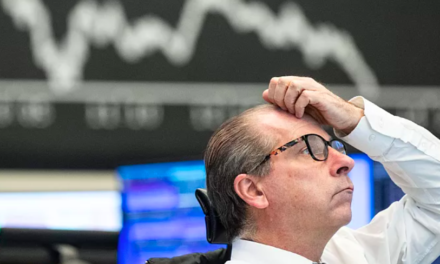Since announcing a radical overhaul on Sunday, July 7, dozens of staff have been exiting Deutsche Bank offices after having been let go as part of the bank’s efforts to save revenues and prevent further losses.
Employee Cutbacks Hit Stock Prices
Layoffs started in their offices in Asia and spanned to their New York bases, as the lender scrambles to cut down yearly expenditure by €6 billion ($6.7 billion).
By 2022, Germany’s investment giant is set to reduce its workforce by 18,000, with their equities sales & trading business bearing the force of the job cuts. This significant slash is already in addition to more than 5,000 employees that had previously been laid off in 2018.
The bank is currently enduring sinking stock prices and bond yields shortly after news about the mass downsizing broke out, with shares dropping by 6.5% since Monday and further dwindling at 3.8% by midday.
In an attempt to ease the looming uncertainty over the company’s future, CEO Christian Sewing has declared that he will be committing 25% of his salary to Deutsche shares–amounting to 820,000 euros.
Sewing, together with his finance chief, has reportedly been walking the investors through the turnaround plan all week.
While analysts agree that cutbacks on the trade desks are the right course to take, investors are still skeptical on how this drastic change will pan out and if Deutsche Bank will need to gain new assets to carry out Sewing’s plan.
Interest rates are still unfavorable, and German market shares continue to be bought out by American banks, adding to doubt that the bank can still manage to turn a profit amidst the massive cost-cutting.
Not everyone is as pessimistic, however. JPMorgan’s former CFO Douglas Braunstein, with his 3.1% Deutsche shares, holds high hopes that the bank’s major shift out of high-risk investment banking and retreat to its roots will be a “successful strategic decision.”
After Deutsche shares shrunk by 10%– their lowest drop since 2016, more analysts, like Fitch Ratings, echo the same sentiment that enforcing the new restructuring plan will involve high risks. The agency had recently demoted Deutsche Bank down to a BBB rating.
Deutsche Banks Next Moves
Sewing stated on Monday that the bank would be investing more of their resources on corporate banking, zoning in on areas where they are competitive like wealth & asset management.
Part of this overhaul includes setting up a “bad-bank” for the €74 billion ($83 billion) worth of assets that Deutsche Bank will be returning for wind-down. Following further capital returns, the bank hopes to increase its leverage ratio to approximately 4.5% by 2020.
The chief executive aims to put an end to the lender’s history of over-promising and underperformance with a €7.4 billion ($8.3 billion) “restart for Deutsche Bank” to revive profitability growth.
Things don’t seem to be going well yet for the German lender, as their Additional Tier 1 (AT1) perpetual bond has stooped down to 2.4 cents on the dollar at 84.6 as reported on Tuesday.
Deutsche’s euro-denominated AT1 bonds callable in 2027 slid further by 1.5 cents, now trading around at 86.56 on the dollar.
These significant changes were set into motion a few short months after heavily publicized talks of merging Deutsche Bank with Commerzbank fell out.















